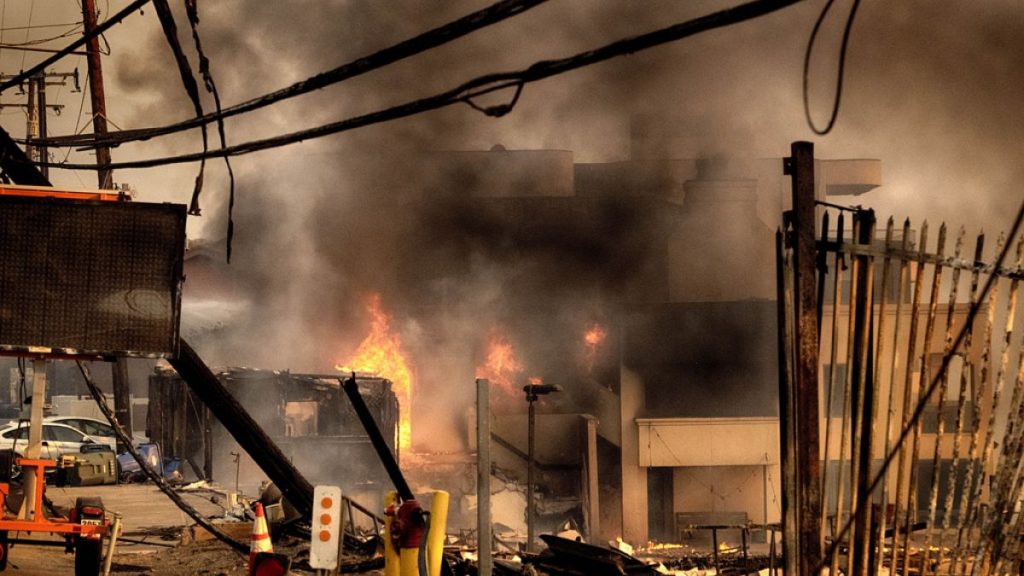The devastating wildfires that have ravaged Southern California since January 7, 2024, have left a trail of destruction, claiming 25 lives and obliterating over 12,000 buildings. While the immediate crisis appears to be waning, the long road to recovery has just begun. Los Angeles Mayor Karen Bass, while acknowledging the ongoing emergency, has encouraged residents to begin contemplating the rebuilding process, a daunting task given the immense scale of the disaster. The Federal Emergency Management Agency (FEMA) has stepped in to provide immediate financial assistance to evacuees, offering up to $700 to cover essential needs. However, more substantial grants will not be available until insurance claims are processed, leaving many residents in a precarious financial position. The full extent of the damage, both to private property and public infrastructure, is still being assessed, but early estimates suggest that these fires could be the most expensive in US history.
Despite the progress made in containing the major blazes, the threat of further wildfires remains palpable. Strong winds continue to sweep across the scorched landscape, creating ideal conditions for new fires to ignite. Authorities have issued widespread fire warnings, and preemptive power outages have been implemented to mitigate the risk of downed power lines sparking further conflagrations. Over 77,000 households remain without electricity, adding another layer of hardship to the already burdened residents. Firefighters remain on high alert, vigilantly monitoring the situation and responding swiftly to any new outbreaks.
The combination of dry vegetation, strong winds, and ongoing drought conditions has created a perfect storm for these catastrophic wildfires. While firefighters have valiantly battled the flames, the sheer intensity and rapid spread of the fires have overwhelmed resources and left communities reeling. The scale of the destruction underscores the growing threat posed by wildfires in the face of climate change, with prolonged periods of drought and extreme weather events becoming increasingly frequent and severe. The ongoing challenges in containing these fires highlight the need for improved fire prevention strategies, enhanced firefighting resources, and community preparedness programs.
The recovery process will be long and complex, requiring a coordinated effort between government agencies, non-profit organizations, and the affected communities. Beyond the immediate needs of shelter, food, and medical care, the rebuilding of homes, businesses, and critical infrastructure will require significant investment and resources. The psychological toll of the disaster, with residents losing their homes, livelihoods, and in some cases, loved ones, will also require ongoing support and mental health services. The path to recovery will undoubtedly be challenging, but the resilience and determination of the Southern California community will be crucial in overcoming this devastating event.
The ongoing threat of wildfires, even as firefighters make progress in containing existing blazes, underscores the precarious situation facing Southern California. The combination of dry conditions, strong winds, and damaged infrastructure creates a high-risk environment for further outbreaks. The preemptive power outages, while necessary to prevent new ignitions, also add to the hardship faced by residents, many of whom have already lost their homes and livelihoods. The constant threat of new fires creates a sense of unease and uncertainty, making it difficult for communities to begin the process of healing and rebuilding.
The wildfires in Southern California serve as a stark reminder of the increasing threat posed by climate change. The prolonged drought conditions and extreme weather events, including high winds and dry lightning, create a tinderbox-like environment that is highly susceptible to wildfires. These conditions are projected to worsen in the coming years, making it imperative that communities adopt proactive measures to mitigate the risk of future disasters. This includes implementing stricter building codes, creating defensible spaces around homes, investing in early warning systems, and enhancing firefighting resources. The devastating consequences of these fires underscore the urgent need for a comprehensive and coordinated approach to address the growing threat of wildfires in the face of a changing climate.














